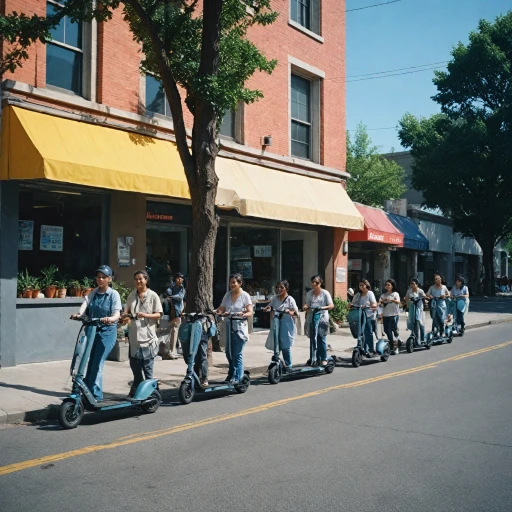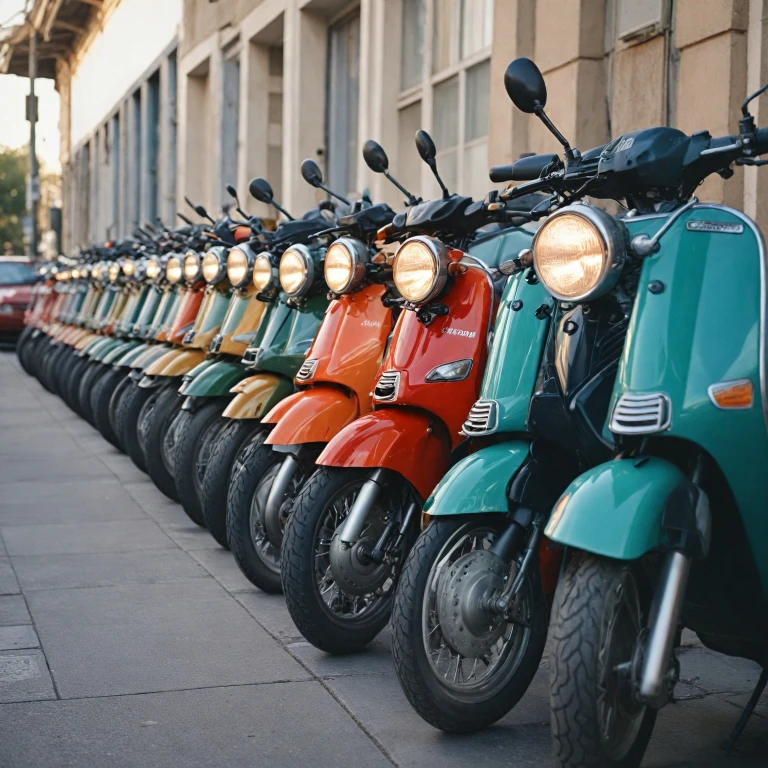Types of Motor Scooter Chargers
A Closer Look at Various Motor Scooter Chargers
Understanding the different types of chargers for electric scooters, commonly referred to as motor scooters, is crucial for maintaining your scooter's battery life. The variety of options available in the market can be overwhelming, but recognizing their unique features can assist you in selecting the right product for your needs.
One of the most common types of scooter chargers is the standard charger, which often comes with the electric scooter at the time of purchase. These typically meet the scooter's required volt, amp, and power needs, ensuring that the battery charger is suited to the specifications of the scooter parts. However, if you need a replacement or an additional charger, knowing your scooter's specifications is key to finding the appropriate charger power.
Fast chargers have gained popularity among riders who prioritize quicker charging cycles. While they promise rapid battery delivery, it's essential to verify that the fast charger is compatible with your battery pack to avoid damaging the scooter battery. Always check the charger's volt and amp specifications against the original charger to prevent any charging cycle issues.
Universal chargers are designed to be compatible with a range of electric scooters, featuring adjustable volt and amp settings and a variety of plug types and connector ports, such as the pin xlr or typical two-pin plug. Though they offer flexibility and can cater to scooters with different lithium battery types, it's crucial to ensure that the connector type is suitable for your scooter model.
For those using more specialized or older scooter models, customized chargers tailored to specific battery packs can be a valuable investment. These chargers precisely match the scooter's power requirements and charging cycle, preserving the battery's longevity.
For insights into why selecting the appropriate
razor electric scooter charger is critical, explore further resources that delve into the significance of matching chargers to specific scooter models.
Choosing the Right Charger for Your Scooter
Finding the Best Charger for Your Needs
Choosing the right charger for your scooter is essential to maintain the performance and longevity of the battery pack. With a variety of chargers available in the market, pinpointing the perfect fit requires understanding a few critical elements.
- Connector Type: The charger pin or connector must be compatible with your scooter's charging port. Common types include the pin, XLR, and custom connectors found in proprietary scooters.
- Voltage and Amperage: Your scooter battery charger should match the volt and amp requirements of your battery. A mismatch can cause inefficient charging cycles and potential damage. Consult your scooter's manual or manufacturer details for this information.
- Charging Speed: Regular chargers usually have a 2 to 4 amp output, but an amp charger with higher output can reduce charging time, which may or may not be ideal depending on the battery chemistry.
- Quality and Price: While it may be tempting to opt for cheaper options, investing in an original charger or a high-quality product ensures efficiency and safety. Poorly made chargers can increase the risk of electrical failures or battery damage.
When in doubt, consider checking resources online to understand specific chargers like the Jetson electric bike charger, which can offer insights into compatibility and performance standards.
Proper Charging Practices
Effective Charging Techniques for Your Electric Scooter
Ensuring the longevity of your scooter’s battery and charger involves adopting recommended charging practices. Here’s a helpful guide to optimizing the charging cycle for your electric scooter.
- Use the Right Charger: Always utilize the original charger or one that adheres to the charger standard specified for your scooter. Using mismatched voltage and amp ratings could damage the battery or reduce its life.
- Proper Connection: Ensure that the charger plug is securely inserted into the charger port. A loose charger pin or poorly fitted connector could lead to inefficient charging and potential battery damage.
- Charge in a Controlled Environment: For optimal results, avoid charging your scooter bike in extreme temperatures. Excessive heat or cold can impact battery performance and its charging efficiency.
- Regular Charging: It's a good habit to charge your battery pack regularly rather than waiting for it to completely deplete. This practice helps in maintaining the power levels and health of the lithium battery.
- Monitor Charging Time: Overcharging can degrade battery performance. Most modern batteries and chargers automatically stop when fully charged, but it's wise to be mindful of the charging duration to prevent any malfunctions.
- Avoid Frequent Short Charges: While it's tempting to give quick boosts, frequent short bursts of charging can be detrimental. Aim for full charging cycles to preserve the battery’s health.
- Safety First: Ensure that the charger is placed on a non-flammable surface and away from direct sunlight during the charging session to prevent any hazards.
For more insights on safely managing your electric scooter, including the right safety gear, consider checking out this
essential guide on helmets for your motor scooter. Following these practices will not only enhance safety but also ensure a longer lifespan for your charger and battery.
Troubleshooting Common Charging Issues
Troubleshoot Charging Challenges with Ease
Encountering issues when attempting to charge your electric scooter can be frustrating, but many common problems can be pinpointed and resolved with a bit of detective work. Whether you're dealing with a charger that doesn't seem to power on or inconsistencies in charging cycles, these tips can help guide you through some of the most frequent obstacles.
- Inspect the Charger and Power Source: Begin by ensuring that your charger is receiving power. Check if the power port or wall outlet is functional. A simple swap to a different outlet may rule out the possibility of a faulty one. Look for any kinks or visible damage on the charger's cable itself, as these can affect connectivity.
- Examine the Battery and Connections: Make sure the battery connectors are free from debris, dust, or corrosion. A clogged charging port or a loose plug can disrupt the flow of power. Also, verify that the scooter battery pack is correctly installed and intact.
- Check the Charger and Battery Compatibility: Ensure that you're using the original charger compatible with your electric scooter's battery. The incorrect voltage, amp, or connector, such as a pin xlr mismatch, can impede the charging process.
- Temperature Considerations: Charging in extreme temperatures, either too hot or too cold, can affect battery performance. Attempt to operate within the scooter's recommended temperature range to avoid energy inefficiencies.
- Monitor for Faulty Components: If you've ruled out surface-level issues but your scooter continues to have problems, internal parts such as the charger pin or the battery cell may be to blame. Consider consulting with a professional to evaluate these components.
By identifying the root of the problem, you can save both time and potential repair costs. Stay informed about power delivery standards and keep an eye on new technologies that might be beneficial in maintaining optimal charging performance for your electric scooters. Understanding the fundamentals of your scooter's battery chargers and knowing when to call in expert help are key to overcoming these common charging hurdles efficiently.
Maintenance Tips for Prolonging Charger Life
Extending the Life of Your Charger
Proper maintenance of your scooter charger not only optimizes its efficiency but also extends its lifespan, ensuring your scooter remains powered and ready for the ride whenever you need it. Here are some essential tips:
- Temperature Control: Keep the charger in a cool, dry place. Avoid exposing chargers to extreme temperatures, as this can cause damage to the charger components and affect charging efficiency.
- Inspect for Wear and Tear: Regularly check the charging port, cables, and connectors for any signs of damage. Pay close attention to the pin, plug, and xlr connector to ensure secure connections.
- Avoid Overcharging: Detach the charger once the battery is fully charged. Continuous charging after the battery is full can cause overheating and reduce the life of the battery pack.
- Use Original Charger: Always opt for the original charger or one approved by the scooter manufacturer. It ensures compatibility and reduces the risk of improper charging that can damage the battery.
- Keep it Clean: Clean the charger regularly. Dust and debris can build up over time, particularly around the charger pin and connector, leading to connection issues.
Buying a quality charger initially can save on the price of repairs or replacements in the future. A well-maintained charger ensures that your electric scooter’s lithium battery hits the right volt amp for optimal power delivery, keeping you on the road without unnecessary interruptions.
Future Trends in Scooter Charging Technology
Innovations Shaping the Future of Charging Technology for Electric Scooters
With the rapid evolution of technology, the future of scooter chargers is set to bring about significant innovations that enhance convenience and efficiency. Here are some exciting trends to look out for:
- Wireless Charging: Imagine charging your scooter without plugging in a single cable. Wireless charging harnesses the power of electromagnetic fields to transfer energy between a charging pad and the scooter's battery. As technology continues to advance, we may see more widespread adoption of this method, reducing wear and tear on charging ports and connectors.
- Fast Charging Solutions: With time being of the essence in our fast-paced world, fast charging solutions are gaining traction. These technologies aim to significantly reduce the charging cycle duration by increasing the power (measured in volt and amp) delivered to the battery. This means users can expect shorter waiting times and more time riding their scooters.
- Intelligent Charging Systems: As electric scooters become smarter, so do their chargers. Modern systems can communicate with your scooter via data connections, adjusting the charging power to optimize performance based on the battery's condition. This not only elongates the life of the lithium battery but also ensures safety and efficiency.
- Eco-Friendly Chargers: The shift towards sustainability has prompted innovations in eco-friendly charger designs. Products that minimize energy waste and utilize renewable energy sources are emerging, aligning with global efforts to reduce carbon footprints.
- Universal Chargers: With the myriad of scooter brands and models available, having a universal charger is a game changer. Future chargers may come equipped with adaptable plug and pin systems (like the pin xlr and other connectors) that cater to multiple scooter types, simplifying the process for consumers.
Remaining informed about advancements in technology can empower scooter users to make better purchasing decisions, whether it's choosing an original charger or exploring new scooter parts. As we witness these trends come to life, the charging experience for electric scooters is set to become more comprehensive, user-friendly, and sustainable.

